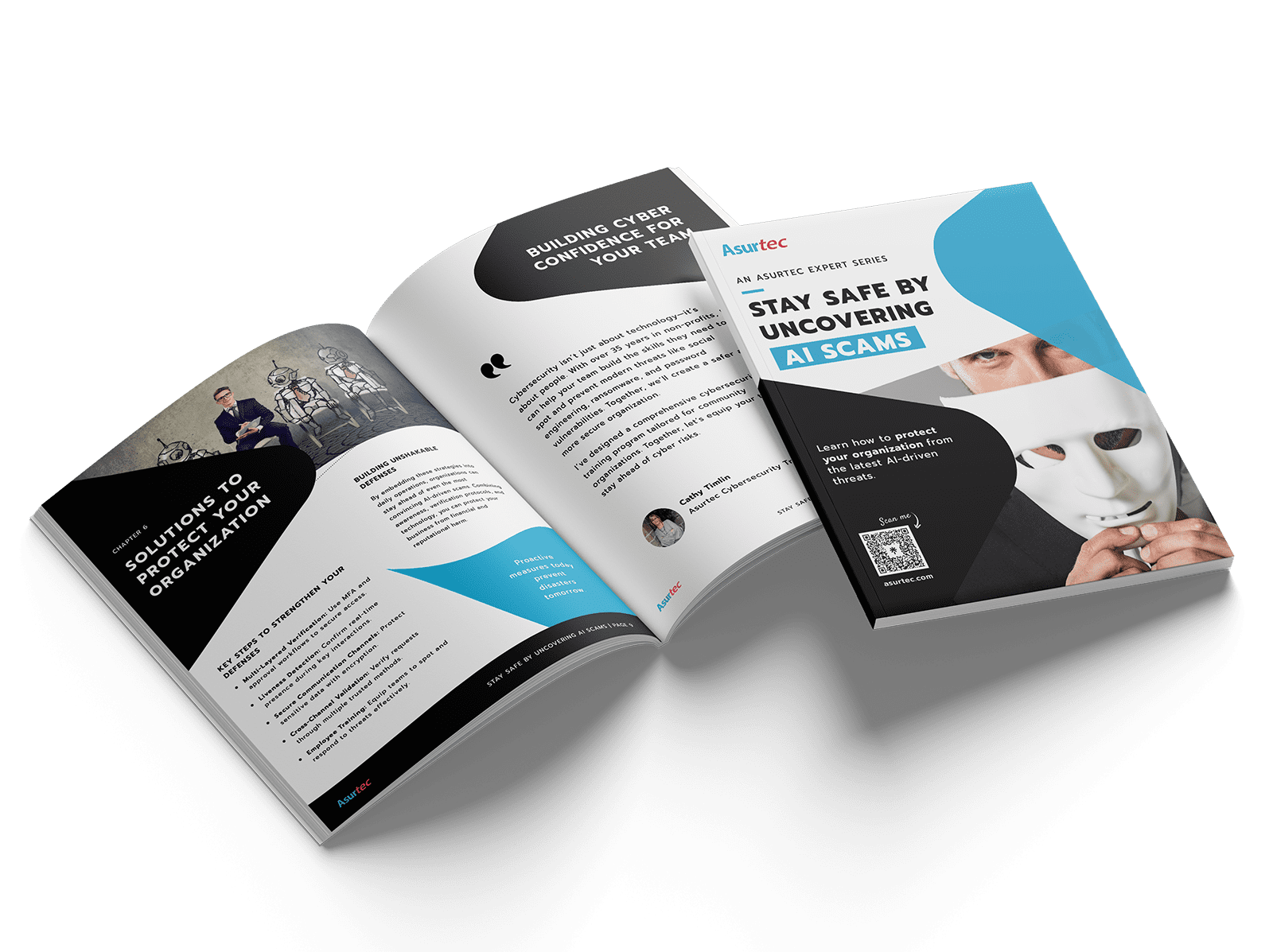Introduction
Because while the tools are easy to access, the questions they raise are anything but. How do you embrace AI without compromising your values? What happens when artificial intelligence starts replacing human connection?
At Asurtec, we work closely with community organizations that are curious about AI — but cautious, too. This article isn’t about jumping on trends. It’s about how AI, when used thoughtfully, can strengthen your mission — not steer it off course. Here’s how to approach AI in a way that’s practical, ethical, and actually useful.
AI Has Already Invaded Your Workflow — You Just Might Not Have Noticed
AI isn’t coming. It’s already here — woven into tools you use every day.
You’ve seen it in action when your email platform suggested the perfect subject line. When your CRM flagged donors most likely to give again. When a chatbot answered a volunteer’s question at 11pm. Or when a writing assistant helped you clean up a grant proposal at the last minute.
So when you ask yourself, “Should we start using AI?” — the truth is, you probably already are. The real question now is: How can you use it intentionally, ethically, and in the best way possible to serve your mission?
Examples of where AI is already quietly supporting nonprofits:
- Email tools optimizing send times based on past engagement.
- Fundraising platforms surfacing high-potential donor leads.
- Chatbots handling FAQs for donations or events.
- Smart scheduling assistants proposing meeting times that work for everyone.
- Writing tools helping you draft copy faster and more confidently.
You don’t need to “go all in” to be part of the AI conversation. You just need to know where it’s already showing up — and decide how to shape it from here.
Where AI Can Actually Help — Without Taking Over
You don’t need to overhaul your systems or build something from scratch to start seeing the benefits of AI. What matters is using it where it helps you do more of what you already care about — reaching people, making informed decisions, and staying human in the process.
Here are a few mission-driven ways AI can quietly make a difference:
Reaching the Right People
AI can help you better understand your audience — donors, volunteers, or community members — and adapt how you communicate with them.
- Suggesting the best time and tone for an email
- Personalizing outreach based on someone’s past engagement
- Drafting messages or posts that speak their language (literally and figuratively)
Building Stronger Relationships
AI isn’t about replacing the human connection. It’s about supporting it.
- Automatically thanking donors or volunteers with messages that reflect their history
- Reminding your team when a touchpoint is overdue
- Helping you see patterns in engagement that might otherwise go unnoticed
Making Smarter Decisions
Program planning, equity audits, and community assessments all benefit from clearer data.
- AI can analyze trends in service requests or event attendance
- It can surface gaps, overlaps, or unexpected patterns
- It can help you answer questions like: Are we reaching who we said we’d reach?
Reducing Busywork, Reclaiming Time
From scheduling to reporting to database cleanup, small automations can create big relief.
- Auto-generating reports with live metrics
- Cleaning up duplicate records or flagging errors
- Sending follow-ups or reminders without manual tracking
💡 Bottom line
What AI Can’t — and Shouldn’t — Replace
If you’ve been hesitant about AI, you’re not alone — and you’re not wrong.
Many nonprofits are intrigued by the possibilities but worried about what could get lost along the way: personal connection, meaningful relationships, nuance, trust. Those are real concerns — and you’re right to ask those questions.
Relationships still require people
AI might help you write a thank-you email, but it won’t notice the pause in someone’s voice. It won’t understand when a message should be softer, slower, or said in person. It doesn’t know your community like you do.
Strategy still needs judgment
AI can surface trends, but it doesn’t understand context. It doesn’t know your history, your values, or your community dynamics. And it certainly doesn’t understand urgency the way you do when something needs to change — now.
Trust isn’t built through automation
You might use AI to help communicate — but trust? That’s earned through consistency, transparency, and care. If your supporters ever feel like they’re talking to a machine instead of a person, the technology is working against you.
💡 The takeaway

Trust, Transparency, and the Ethics of AI Use
Nonprofits don’t just deliver services — they build relationships. And relationships are built on trust. That’s why adopting AI tools isn’t just a technical decision — it’s an ethical one.
Many nonprofit teams are excited by what AI could do… but nervous about what it might undo. And that concern is real.
Data privacy matters — and your community is watching
AI tools rely on data. But in a nonprofit setting, data isn’t just numbers — it’s people. Donors. Volunteers. Service users. You have a responsibility to protect them, and that means asking tough questions before introducing new systems.
Not all AI tools are created with nonprofits in mind
Many AI platforms are built for commercial use — which means they prioritize speed, efficiency, and engagement at scale. But your work isn’t transactional. It’s relational.
Start with policies, not platforms
You don’t need to be a tech expert to use AI responsibly. You just need a shared internal approach:
- Set boundaries
- Define what “human oversight” means for your team
- Train staff to question outputs — not just copy-paste them
💡 The takeaway
Start Small, Think Long-Term
Using AI doesn’t mean transforming your entire organization. It means choosing tools — and moments — that support your values, not distract from them.
Whether you’re just starting to explore or already experimenting, the goal is the same: use AI to deepen your impact without losing what makes your work meaningful.
Here’s how you can start — or move forward — with intention:
Begin where it makes sense
Look at your day-to-day: What’s repetitive? What drains your time but not your creativity?
Let your values lead
Before adopting a new tool, ask: Does this reflect how we want to treat our community?
Involve your team early
Invite staff into the conversation. Try things together. Share what works — and what feels off.
Write it down — even if it’s just a few lines
Create simple internal guidelines and revisit as you learn.
💡 The takeaway
Conclusion: Beyond the Hype, On Your Own Terms
AI is already shaping the world around us — and nonprofit work is no exception. But that doesn’t mean you have to dive in headfirst or follow someone else’s roadmap. What matters is how you choose to engage with it: In ways that feel aligned. Intentional. True to the work you care about. There’s space to explore without rushing. To test without overhauling. To use new tools without compromising what makes your mission unique.
At Asurtec, we don’t have all the answers. But we believe nonprofits should be part of the conversation — not left out of it. There’s room to be thoughtful. Room to be unsure. And yes — room to grow, without losing your soul.

